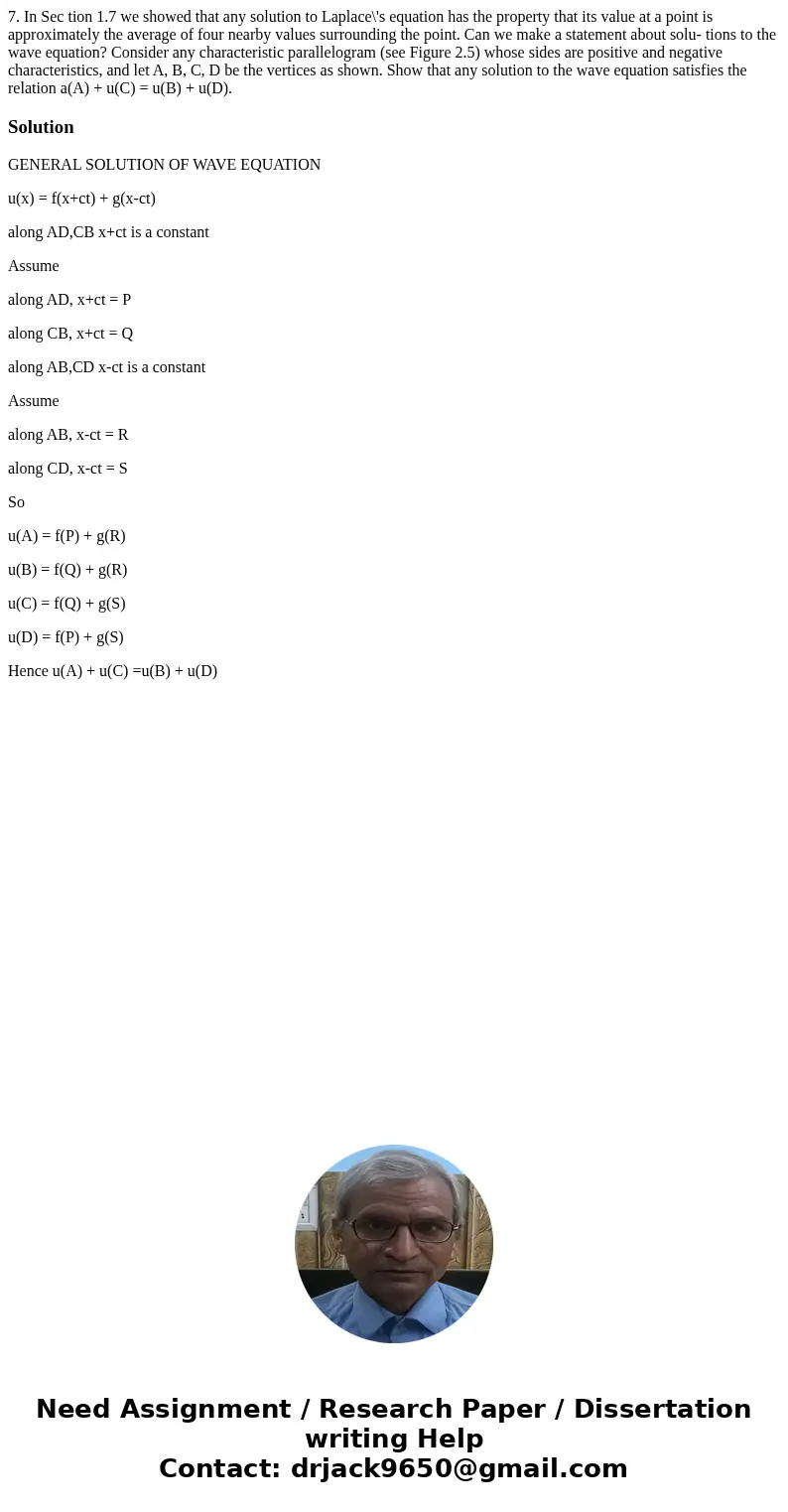7 In Sec tion 17 we showed that any solution to Laplaces equ
7. In Sec tion 1.7 we showed that any solution to Laplace\'s equation has the property that its value at a point is approximately the average of four nearby values surrounding the point. Can we make a statement about solu- tions to the wave equation? Consider any characteristic parallelogram (see Figure 2.5) whose sides are positive and negative characteristics, and let A, B, C, D be the vertices as shown. Show that any solution to the wave equation satisfies the relation a(A) + u(C) = u(B) + u(D). 
Solution
GENERAL SOLUTION OF WAVE EQUATION
u(x) = f(x+ct) + g(x-ct)
along AD,CB x+ct is a constant
Assume
along AD, x+ct = P
along CB, x+ct = Q
along AB,CD x-ct is a constant
Assume
along AB, x-ct = R
along CD, x-ct = S
So
u(A) = f(P) + g(R)
u(B) = f(Q) + g(R)
u(C) = f(Q) + g(S)
u(D) = f(P) + g(S)
Hence u(A) + u(C) =u(B) + u(D)

 Homework Sourse
Homework Sourse